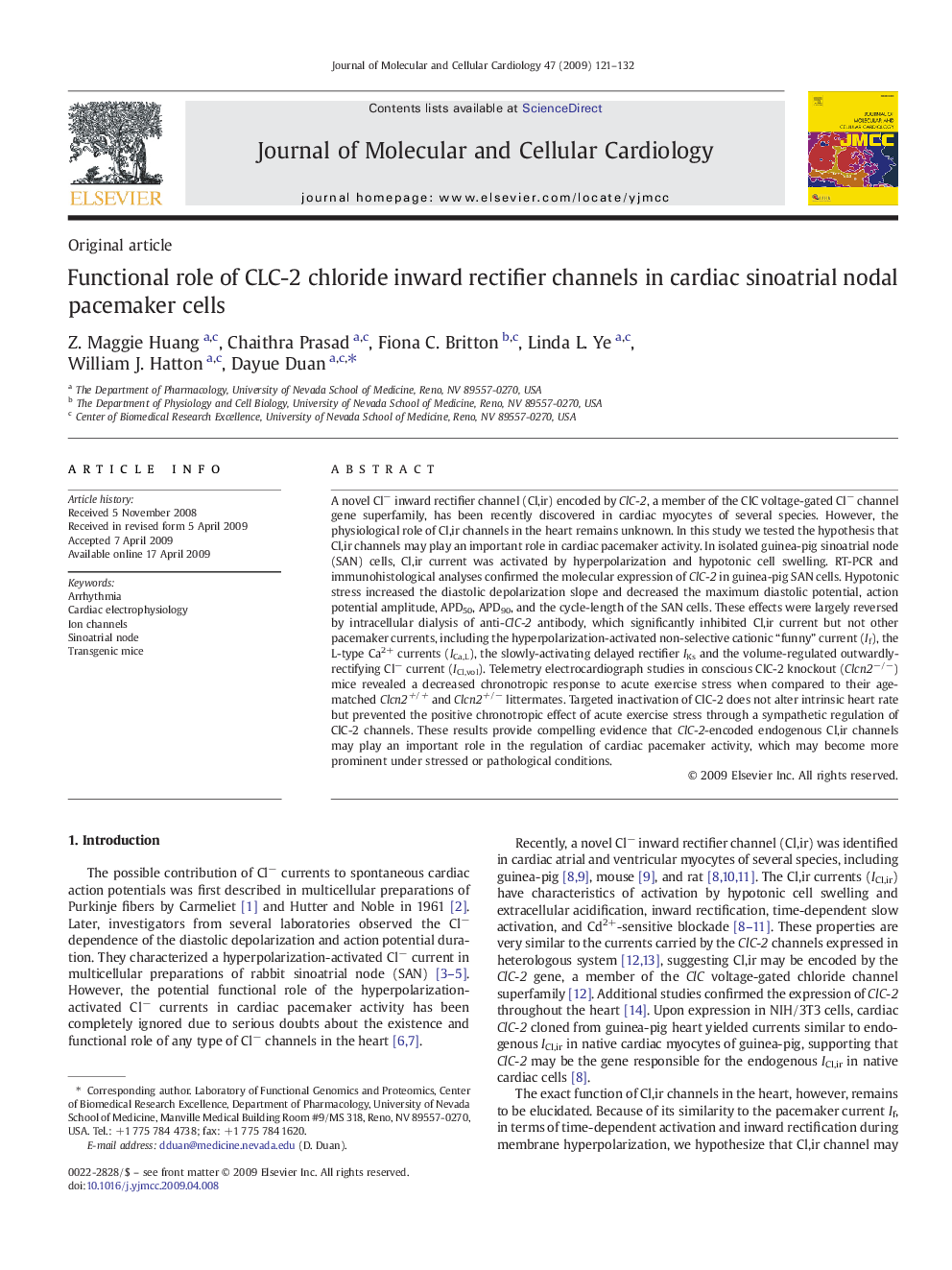| Article ID | Journal | Published Year | Pages | File Type |
|---|---|---|---|---|
| 10954130 | Journal of Molecular and Cellular Cardiology | 2009 | 12 Pages |
Abstract
A novel Clâ inward rectifier channel (Cl,ir) encoded by ClC-2, a member of the ClC voltage-gated Clâ channel gene superfamily, has been recently discovered in cardiac myocytes of several species. However, the physiological role of Cl,ir channels in the heart remains unknown. In this study we tested the hypothesis that Cl,ir channels may play an important role in cardiac pacemaker activity. In isolated guinea-pig sinoatrial node (SAN) cells, Cl,ir current was activated by hyperpolarization and hypotonic cell swelling. RT-PCR and immunohistological analyses confirmed the molecular expression of ClC-2 in guinea-pig SAN cells. Hypotonic stress increased the diastolic depolarization slope and decreased the maximum diastolic potential, action potential amplitude, APD50, APD90, and the cycle-length of the SAN cells. These effects were largely reversed by intracellular dialysis of anti-ClC-2 antibody, which significantly inhibited Cl,ir current but not other pacemaker currents, including the hyperpolarization-activated non-selective cationic “funny” current (If), the L-type Ca2+ currents (ICa,L), the slowly-activating delayed rectifier IKs and the volume-regulated outwardly-rectifying Clâ current (ICl,vol). Telemetry electrocardiograph studies in conscious ClC-2 knockout (Clcn2â/â) mice revealed a decreased chronotropic response to acute exercise stress when compared to their age-matched Clcn2+/+ and Clcn2+/â littermates. Targeted inactivation of ClC-2 does not alter intrinsic heart rate but prevented the positive chronotropic effect of acute exercise stress through a sympathetic regulation of ClC-2 channels. These results provide compelling evidence that ClC-2-encoded endogenous Cl,ir channels may play an important role in the regulation of cardiac pacemaker activity, which may become more prominent under stressed or pathological conditions.
Related Topics
Life Sciences
Biochemistry, Genetics and Molecular Biology
Cell Biology
Authors
Z. Maggie Huang, Chaithra Prasad, Fiona C. Britton, Linda L. Ye, William J. Hatton, Dayue Duan,
